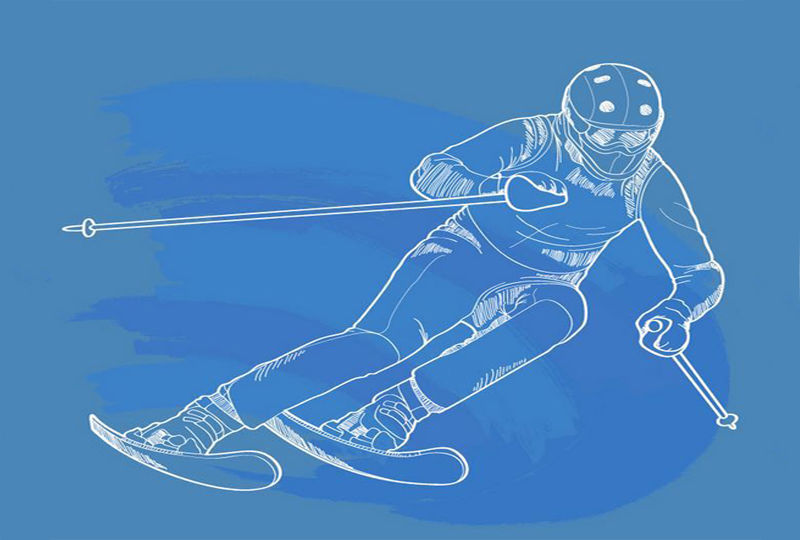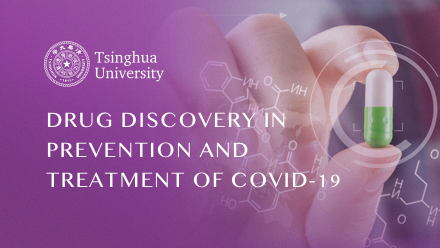
当前课程知识点:Modern Aesthetics:Mechanism and Laws > Chapter5 Mechanisms of Aesthetic Phenomena > 5.3 Mechanisms of Aesthetic Phenomena > 5.3.1 Video
返回《Modern Aesthetics:Mechanism and Laws》慕课在线视频课程列表
返回《Modern Aesthetics:Mechanism and Laws》慕课在线视频列表
同学们好
今天我们讲
审美现象发生机理
人欣赏美的事物产生美感
这种现象是怎样发生的呢?
在上两讲中
我们分别介绍了显功利审美对象和
隐功利审美对象引起美感的原因
今天我们来系统介绍一下
审美现象的发生过程和机理
显功利审美对象引起人美感的原因
在于外部事物满足了人有意识的功利需求
在功利满足的过程中
事物的样子在人的大脑皮层视觉区
与快感区之间建立了新的稳定的联系通道
引起原本由功利作用引起的快感
隐功利审美对象引起人美感的原因
在于这类事物满足了人潜意识的功利需求
引起人的快感
在这种潜意识需求的满足过程中
事物的样子也会在大脑皮层的视觉区与
快感区之间形成稳定的联系通道
引起原本由功利作用引起的快感
两种审美现象都起因于主体的功利需求
也就是
外部事物满足了主体的功利需求引起快感
在这个过程中
人神经系统活动的特点
使得事物的样子在大脑皮层视觉区(或听觉区)
与快感区之间建立了新的稳定的联系通道
引起原本由功利作用引起的快感
这种新的稳定的联系通道
现代美学称为审美心理
审美现象发生的原因和机理
就是事物的样子符合了人的审美心理
从而引起美感的产生
审美现象的发生过程分为生成和发生两个阶段
生成阶段指由功利活动向审美活动转变的过程
是审美现象的准备阶段
发生阶段指事物的形式引起美感的过程
是审美现象的完成阶段
审美心理是生成阶段完成的标志
是发生阶段起决定作用的因素
在审美现象中具有至关重要的作用
审美心理形成之后
审美主体看见美的事物就不能不产生美感
没有审美心理
人再怎么努力也不会产生美感
所以
认识和掌握审美现象的发生机理
研究审美现象的发展变化规律
就是要认识审美心理的形成过程
存在方式和发展变化规律
两种审美对象形成审美心理的过程
形成两种不同的审美心理
显功利审美对象形成的审美心理
我们称为记忆型审美心理
隐功利审美对象形成的审美心理
我们称为需求型审美心理
记忆型审美心理形成的过程
是主体有意识的功利需求形成潜意识审美心理的过程
有意识功利需求的满足过程
会在意识中留下或多或少的痕迹
是一种情感记忆
所以称为记忆型审美心理
记忆型审美心理与主体的生活经历有关
不同经历的人会有不同的记忆型审美心理
因而具有较强的个性特征
记忆型审美心理因为是在后天社会生活中形成的
因而具有较强的社会特性
当社会环境发生变化
与之相关的审美心理就会随之发生变化
需求型审美心理的形成过程
是主体无意识的功利需求形成潜意识审美心理的过程
由于功利需求和审美需求始终没有上升到意识层面
所以人们对于美感的产生毫无知觉
形成需求型审美心理的功利需求
主要表现为两个方面
一是先天本能的需求
如性本能 好奇本能 生死本能 创造本能等
二是感觉器官的需求
如视觉需要的适当光波
听觉需要的适当声波
嗅觉需要的适当味道等等
由于这类功利需求是主体在
先天本能基础上形成的内在需求
所以
称这类功利需求形成的审美心理为需求型审美心理
需求型审美心理与先天的生理因素相关
人类的生理因素大体相同
所以这种审美心理更具有普遍性
持久性和稳定性
事物之所以能够引起人的美感
在于事物的样子符合了人的审美心理
如果我们知道自己审美心理的内容
也就会知道自己喜欢哪些事物和不喜欢哪些事物
但是由于每个人的生活经历不同
形成的审美心理也就不同
而且审美心理处在不断的变化过程中
所以美学不可能研究每一个人的审美心理
不过
审美心理的形成是有规律的
如果掌握了审美心理的形成规律
也就比较容易了解一个人审美心理的内容
正是基于这样的原因
现代美学把研究审美现象的路径
确定为对审美心理形成规律的归纳和总结
审美心理的形成包括社会生活和主体生理两方面因素
主体生理又分为先天本能和感觉器官两种因素。
在接下来的课程中
我们将从社会生活
先天本能和感觉器官三个方面
介绍审美心理形成的规律
社会生活形成审美心理的规律
主要介绍人际影响形成审美心理规律
社会地位形成审美心理规律的
社会发展水平形成审美心理规律
功利追求形成审美心理规律
生理本能形成审美心理规律
主要介绍好奇本能形成审美心理规律
性本能形成审美心理规律
创造本能形成审美心理规律
和生死本能形成审美心理规律
感觉器官形成审美心理规律
主要介绍视觉 听觉 嗅觉 触觉
温度感和空间感在审美心理形成中的作用
今天就讲到这里
谢谢大家
-1.1 Exercises
-2.1 The Origin of Aesthetics
--2.1.2 Exercises
-2.2 The Findings of "Beauty" in Traditional Aesthetics
--2.2.2 Exercises
-2.3 The End of Traditional Aesthetics
--2.3.2 Exercises
-2.4 The Rise of Modern Aesthetics
--2.4.2 Exercises
-3.2 Exercises
-4.1 Research Object of Aesthetics
--4.1.2 Exercises
-4.2 The Composition of Aesthetic Phenomena
--4.2.2 Exercises
-4.3 Classification of the Aesthetic Phenomena
--4.3.2 Exercises
-5.1 The Causes of Aesthetic Sense of the Manifest Utilitarian Aesthetic Objects
--5.1.2 Exercises
-5.2 Reasons for Aesthetic Sense in the Hidden Utilitarian Aesthetic Objects
--5.2.2 Exercises
-5.3 Mechanisms of Aesthetic Phenomena
--5.3.2 Exercises
-6.1 Interpersonal Influence Forms of Aesthetic Psychology Law
--6.1.1.1 Exercises
--6.1.2.2 Exercises
-6.2 Social Status Forming the Aesthetic Psychological Law
--6.2.1.2 Exercises
--6.2.2.2 Exerxises
-6.3 The Level of Social Development Forms the Law of Aesthetic Psychology
--6.3.2 Exercises
-6.4 The Pursuit of Utility Forms the Law of Aesthetic Psychology
--6.4.1.2 Exercises
--6.4.2.2 Exercises
--6.4.3.2 Exercises
--6.4.8 Exercises
-7.1 The Instinct of Curiosity Forms the Aesthetic Psychological Law
--7.1.2 Exercises
-7.2 The Sexual Instinct Forms the Aesthetic Psychological Law
--7.2.2 Exercises
-7.3 The Creative Instinct Forms the Aesthetic Psychological Law
--7.3.2 Exercises
-7.4 The Life Instinct Forms the Aesthetic Psychological Law
--7.4.2 Exercises
-8.1 The Role of Vision in Aesthetic Activities
--8.1.2 Exercises
--8.1.4 Exercises
-8.2 The Role of Vision in Aesthetic Activities
--8.2.2 Exercises
--8.2.4 Exercises
-8.3 The Role of Smell in Aesthetic Activities
--8.3.2 Exercises
-8.4 The Role of Tactile Sense in Aesthetic Activities
--8.4.2 Exercises
-8.5 The Role of Temperature Sense in Aesthetic Activities
--8.5.2 Exercises
-8.6 The Role of Spatial Sense in Aesthetic Activities
--8.6.2 Exercises
-9.1 The Law of Aesthetic Psychological Enhancement
--9.1.2 Exercises
-9.2 The Law of Aesthetic Psychological Decline
--9.2.2 Exercises
-10.1 The Formation of Basic Forms of Art
--10.1.2 Exercises
-10.2 Mechanism by which the Basic Form of Art Causes Aesthetic Feelings
--10.2.2 Exercises
-10.3 Mechanisms in which Artistic Content Arouses Aesthetics
--10.3.2 Exercises
--10.3.4 Exercises
--10.3.6 Exercises
--10.3.8 Exercises
-10.4 The Special Law of Artistic Aesthetics
--10.4.2 Exercises
--10.4.4 Exercises
--10.4.6 Exercises
--10.4.8 Exercises
-Modern Aesthetics and Moral Education
-11.1 Function and Mechanism of Aesthetic Education
--11.1.2 Exercises
--11.1.4 Exercises
-11.2 Approaches to Aestheticization Education
--11.2.2 Exercises
-11.3 Approaches to Pure Aesthetic Education
--11.3.2 Exercises
-11.4 Method of Aesthetic Self-Cultivation
--11.4.2 Exercises



